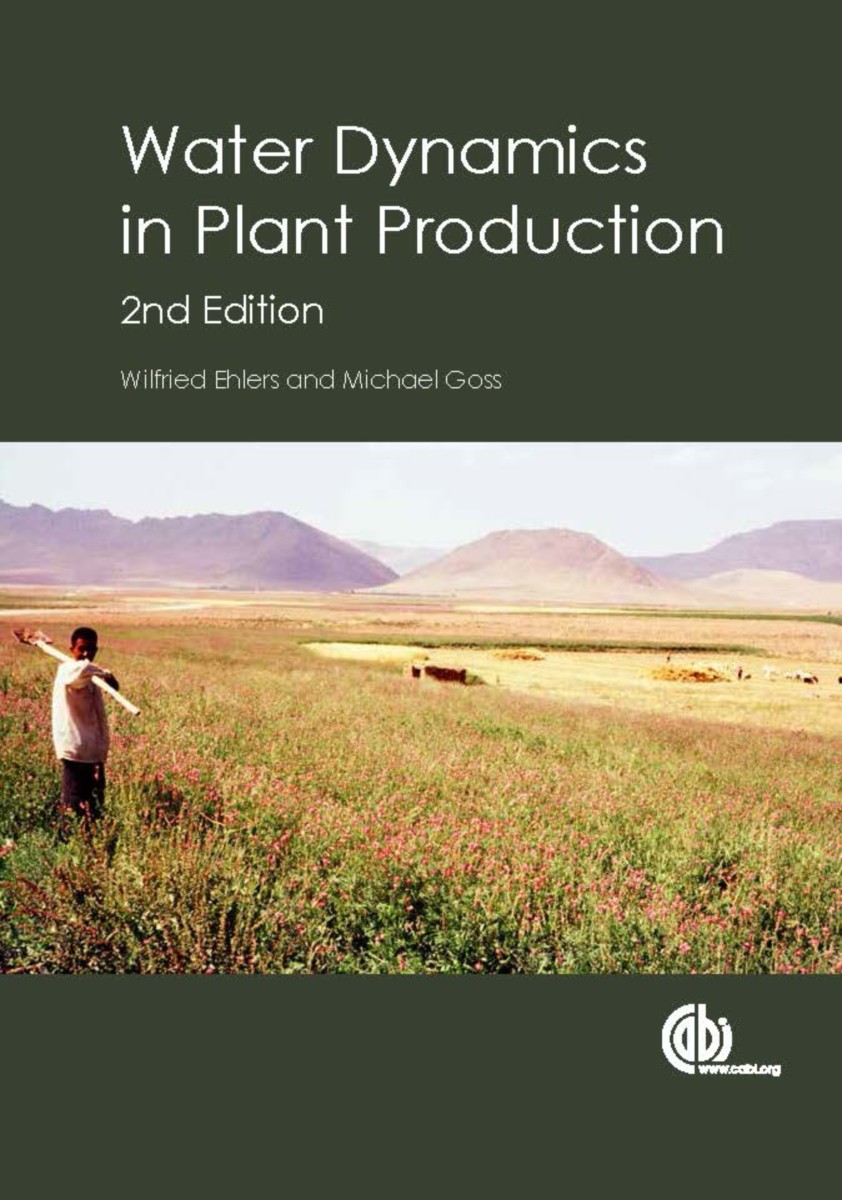Water Dynamics in Plant Production Edition 2
- Publisher
CABI - Published
20th April 2016 - ISBN 9781780643823
- Language English
- Pages 392 pp.
- Size 6.75" x 9.5"
- Publisher
CABI - Published
20th April 2016 - ISBN 9781780643816
- Language English
- Pages 392 pp.
- Size 6.75" x 9.5"
This edition of Water Dynamics in Plant Production focuses on the dynamics of water through the hydrologic cycle and the associated mechanisms that plants employ to optimize growth and development. It describes the basic scientific principles of water transport in the soil–plant–atmosphere continuum, and explains the linkage between transpirational water use and dry matter production. Paying particular attention to the various agronomic strategies for adaptation to climate-driven limitations of water resources, the efficiency of water use in plant production and in achieving an economic yield is presented in detail. This book offers a multidisciplinary introduction to the fundamentals and applications of water dynamics in natural and managed ecosystems, providing an essential state-of-the-art resource for students and researchers of soil and plant science, hydrology and agronomy.
1. The role of water in plant life
1.1 Functions of water in the plant
1.2 Adaptation strategies of plants to overcome water shortage
1.3 Water and net primary production
1.4 Water and type of vegetation
2. The role of water in soil
2.1 Soil genesis and soil functions
2.2 Soil fauna and vegetation cover
3. The interdependency of soil and vegetation
3.1 The significance of the soil for water storage
3.2 Transpiration and seepage of water with different types of vegetation
4. Properties and energy state of water
4.1 Physical-chemical properties
4.2 The concept of water potential and the Darcy equation
5. Water storage and movement in soil
5.1 Fundamentals and principles
5.2 Evaporation
5.3 Infiltration and water transport
6. The root - The plant’s organ for water uptake
6.1 The role of the root in the plant
6.2 Structure of the root tip
6.3 Root systems
7. The water balance of the plant
7.1 Water potentials in plant cells
7.2 Water uptake by roots
7.3 Transpiration by leaves
7.4 The action of stomatal guard cells
7.5 Water transport within the plant
7.6 Water potentials in plants
8. The plant as a link between soil and atmosphere: an overview
8.1 The soil - plant - atmosphere continuum (SPAC)
8.2 Potential evapotranspiration
8.3 Relations between potential evapotranspiration, soil water and transpiration
9. Water use by crops
9.1 Growth of roots and leaves
9.2 Leaf area index and transpiration
9.3 Root system development and water uptake
9.4 How much of the soil water is extractable by plant roots?
9.5 Stomatal control of water vapour loss
9.6 Water use throughout the growing season
9.7 How to determine the components of the field water balance
9.8 Numerical simulation
10. Radiation and dry matter production
10.1 Radiation and net photosynthesis of single leaves
10.2 Radiation interception and dry matter accumulation in crop stands
11. Water use and dry matter production
11.1 Relations and their optimization
11.2 The transpiration ratio and a related standard
11.3 Water use and an estimate of dry matter production
12. Influence of nutrient supply on water use and establishment of yield
12.1 Yield dependency on water and nutrient supply
12.2 Influence of nutrient supply on the relation between water use and yield
12.3 Transpiration efficiency and fertilizer application
13. Yield formation under inadequate water supply
13.1 Physiological reactions and assimilate partitioning
13.2 Economic yield
13.3 Water shortage at different phenological stages
14. Water stress in plants
14.1 Measuring water stress in plants
14.2 How plants perceive water stress
15. Climatic factors influencing yield
15.1 Growth limiting climatic factors
15.2 Climate change
15.3 Plants, soils and cropping pattern in a changing environment
16. Breeding for yield and water use
16.1 Comparing old and new cultivars
16.2 Future strategies in plant breeding
17. Controlling the soil’s water balance by soil management
17.1 Which of the balance components can be changed?
17.2 Controlling infiltration
17.3 Controlling evaporation
17.4 Increasing the quantity of extractable soil water
17.5 Conservation tillage
18. Controlling water use by crop management
18.1 Crop rotation
18.2 Choice of species and cultivars
18.3 Seeding and stand density
18.4 Fertilizer application
19. Irrigation
19.1 Need, concerns, problems
19.2 Tapping water - The basis of early civilizations
19.3 Water requirement of crops
19.4 Timing and adjusting the application of water
19.5 Efficient water use
19.6 Irrigation methods
20. Epilogue


